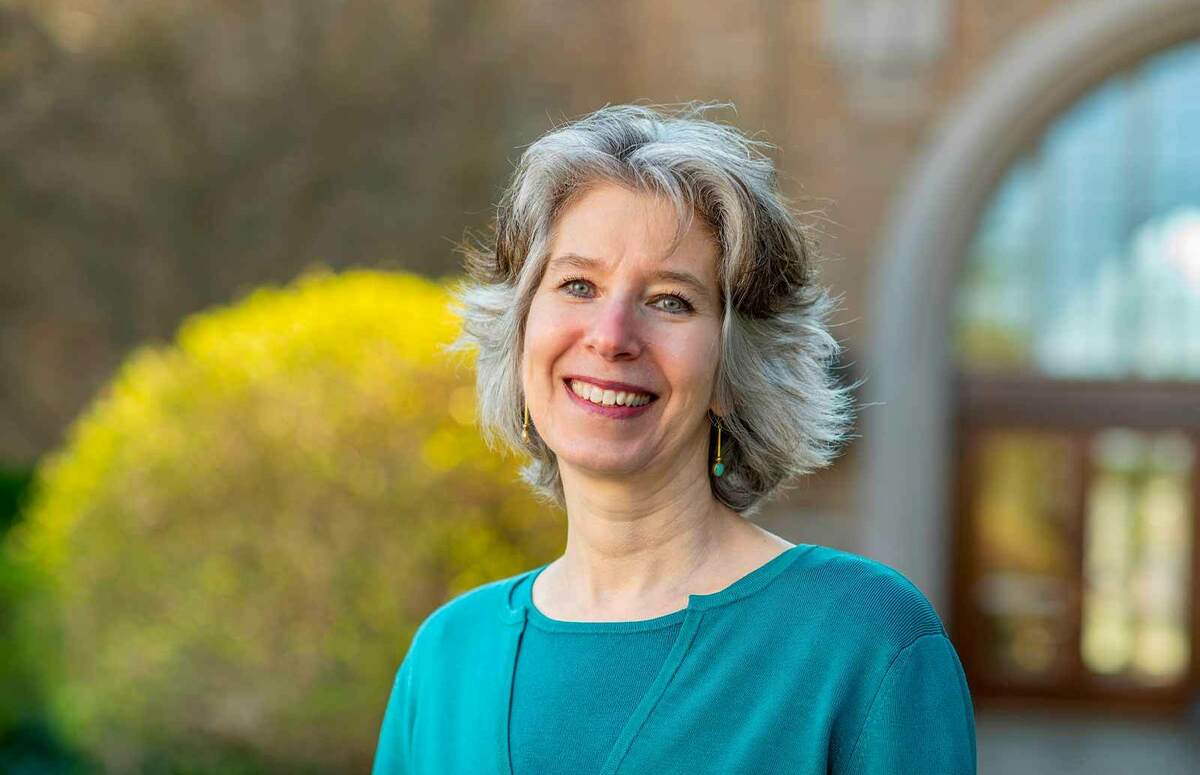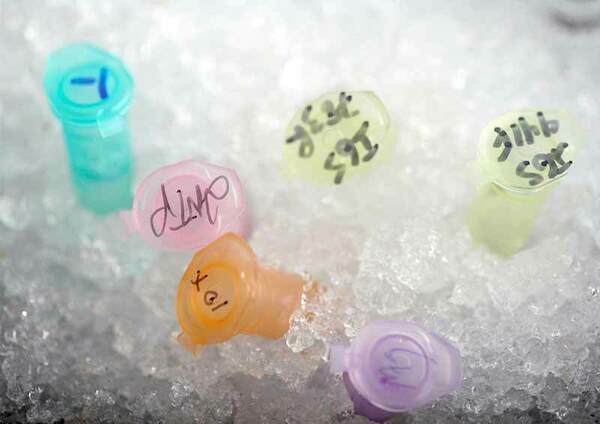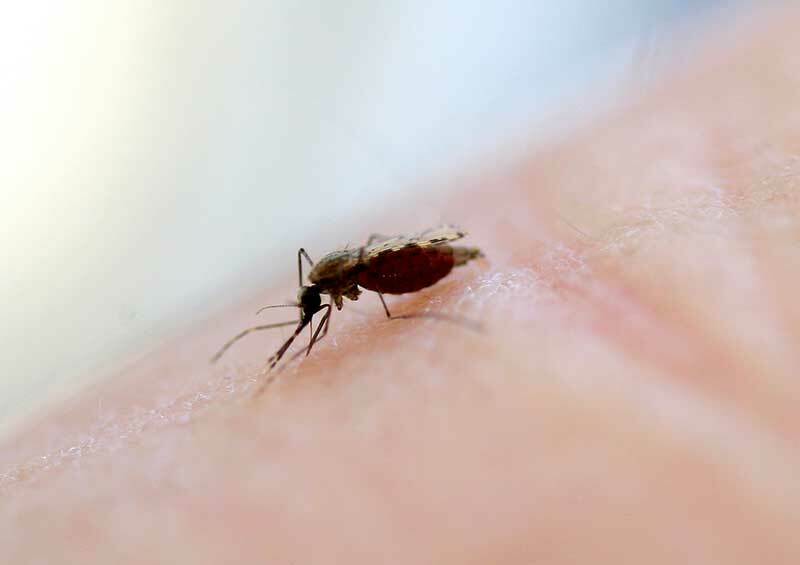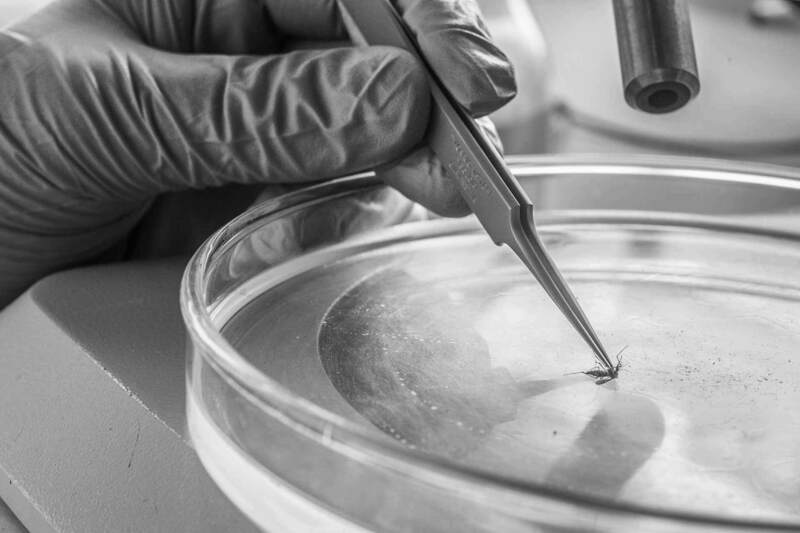
Gene Drive
Nora Besansky
College of Science
Nora Besanksy, now the Martin J. Gillen Professor of Biology, remembers her interview at the University of Notre Dame before she was hired in 1997.
Morris Pollard, then an emeritus professor, asked her one of the classic questions about her future goals. Describing herself now as young and naive at the time of the interview, Besansky remembers blurting out, “I want to be the best.”
Nearly 25 years later, she most likely is.
She was inducted into the National Academy of Sciences in 2020, considered a top achievement for any scientist. She runs a thriving laboratory and also inspires her students through well-organized lectures during her genetics course.
Just like any ambitious person who dreams of reaching the top of her or his career, Besansky was filled with aspirations, but never carried an expectation.
“It’s the kind of thing where no matter how hard you work at home and how hard you work at the University, you’re going to feel like you haven’t done enough in either place.”
“Induction into the National Academies was emotional, but I think on some level I actually did hope for that when I first started here as faculty,” said Besansky, an expert in the genomics of malaria vectors.
She has applied several genomic technologies to deepen the understanding of the relationship between malaria-transmitting mosquitoes and their environments. Research in her laboratory aims to uncover how two genetic processes — chromosome structural rearrangements known as inversions, and the transfer of genes between species known as introgression — contribute to enhanced ability to transmit disease.
She is currently developing novel genomic resources and tools, including molecular inversion genotyping, to further her research.
Besansky attributes her success to a strong internal drive, developed in part because of her upbringing by supportive parents, a researcher husband who understood her workload and encouraged her to work long hours and travel when necessary, and a series of fulfilling projects that propelled successful discoveries.


Starting her first research laboratory in 1997 was intimidating, she said, because she had worked for the Centers for Disease Control for a number of years where she had never taught a class or ran a lab. She questioned whether she could do it, especially with her own 5- and 7-year-old children at home.
But her husband, Frank Collins, now professor emeritus in the Department of Biological Sciences — whom she met at the Laboratory of Parasitic Diseases at the National Institutes of Health — encouraged her to work as much as she felt was necessary. Her parents also supported her, with her father reminding her that she had always been successful when taking on difficult challenges.
“It’s the kind of thing where no matter how hard you work at home and how hard you work at the University, you’re going to feel like you haven’t done enough in either place,” Besansky said, noting that she still carries a pang of guilt when she recalls how much time she dedicated to her career. “The thing to remember is that kids are really strong, much stronger than most people realize at the time.
“Your career is going to be so fulfilling later on in life after the kids grow up and move out, so you need to take opportunities while you have them.”
Besansky has always embraced her internal drive, but attributes it partly to a tragedy in her family before she was born. Her parents, first-generation Americans with Ukrainian roots living in Brooklyn, likely decided to have only one child, Besanksy said, so they could give that child every opportunity they did not have during the Great Depression.
“My father’s family couldn’t afford potatoes for a nickel,” she said.
A daughter was born before her father left to fight during World War II, with the thought that a child would bring comfort to Besansky’s mother if he died.
Her father lived to be 103. The child, Maxine, died at 13 from leukemia. Besansky was yet to be born, and the family tragedy meant that Besansky would be an only child. Adults and other friends and relatives showered her with protection and support, and gifted her with all opportunities to succeed. Ant farms. Spiders in jars. Guidance in anything and everything. And yet, no outside pressure from her parents.
“It wasn’t until a little bit later, and I don’t remember how old I was, when it finally dawned on me that if my sister had not died, I would not have been born,” she said.
That realization motivated Besansky to achieve at the highest levels.
She earned her bachelor’s degree in biology from Oberlin College, during which time she landed an internship at the Smithsonian National Museum of Natural History, where she had also worked as a high school junior. From there, she earned both her master’s and doctoral degrees from Yale University. Besansky completed her postdoctoral research for the Centers for Disease Control (CDC), and was a staff scientist at the CDC from 1991 to 1997, during which time she also worked as an adjunct assistant professor in the Department of Biology at Emory University. In addition to her work now in the Department of Biological Sciences, she is also affiliated with the Eck Institute for Global Health at Notre Dame.
One of her most fulfilling projects involved writing a white paper and coordinating an international group of researchers for the National Institutes of Health genome sequencing projects. The team assembled genomes and transcriptomes — the so-called “readouts” of copies of DNA’s four base pairs of chemicals, found in RNA — in 16 different types of Anopheles mosquitoes in Latin America, Asia, Africa and Europe.
The high-profile project was exciting and adrenaline-fueled, and turned out better than even Besansky had hoped.
“And in fact, when that was over … I had been working so hard on the project that I woke up the next morning and thought, ‘What do I do now?’” she said. “I felt empty, and it was very strange, almost like going through a grieving process because I was in contact with all of these colleagues weekly, if not daily.
“And, you know, all of a sudden that was over.”
Daniel Neafsey, an assistant professor of immunology and infectious disease at the Harvard T.H. Chan School of Public Health and associate director of the Broad Institute’s Genomic Center for Infectious Diseases, described Besansky as the “indomitable hub” of the collaborative project. As the lead of the sequencing part of the project at the Broad Institute, he worked closely with her.
He characterized her as a researcher with a dogged determination to explore complicated ideas and make them sound simple through her effective writing skills, Neafsey said.
“Even as Nora has become a leader in the field of Anopheles mosquito genomics and evolution, managing large, collaborative efforts, she has never become removed from the science,” Neafsey said. “Her intellect and curiosity have been very important drivers of the work she has been involved in.”
Matthew Hahn, distinguished professor in the Department of Biology at Indiana University, has collaborated with Besansky for many years, and described a time when she went against the standard way of thinking about a problem — and made a new discovery.
“I am not a mosquito person, but Nora is a very smart person and also a mosquito person,” Hahn said. “Our most famous collaboration came about because I did a standard analysis, and Nora said, no, that’s not right.
“And I said, I’ve done what everyone else said you should do, and this is the answer,” he continued. “And she said, no; I’ve looked at the mosquitoes, and I’m sure there is something wrong with the method.”
She was correct; the method everyone had been using made an incorrect assumption. Hahn assisted her with determining exactly what was wrong with the method, but noted, “She knew. She knew there was something wrong.”
While that project was an outgrowth of the internationally collaborative study on the 16 types of Anopheles mosquitoes, Besansky did move on to tackle other questions in vector biology and genetics. These include studies on the formation of more Anopheles species, the investigation of the Anopheles Y chromosome, and the development of molecular tools to study how inverted chromosomes affect the mosquitoes’ physiology.
She urges anyone in science, and women in particular, to forge ahead with their careers even after becoming parents. Many women suffer from a lack of self confidence in their professional lives, and sometimes they don’t push hard enough because of it, Besansky said. Had she not worked as hard as she has, the National Academies may have remained a dream.
And her sons, Max and Michael, are doing just fine — Max is an animation specialist, and Michael works in health care administration.
“I have such a sense of fulfillment that I wouldn’t have had, had I given in to my guilt,” she said. “And it was also good for them, because you want to be a 21st-century role model.”
Neafsey said he felt fortunate to have been one of her collaborators, noting that she has been a mentor to many trainees.
“Nora’s use of molecular genetic approaches to identify the real but imperfect boundaries to gene flow among the members of the Anopheles gambiae species complex was pioneering, and will be emulated by the rest of the field in defining species complexes for other malaria vectors in other parts of the world in coming decades,” Neafsey said.
